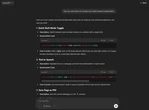The extreme tariffs that President Donald Trump has applied to nations across the world have had a whipsaw effect on global trade, with markets nosediving and countries scrambling to strategize a response. Supply chains in particular have been upended: Clothes-makers fear fluctuations across the entire production system, the cost of furniture and other home goods is likely to soon spike, and companies like Apple, which manufacture much of their high-tech products in China, have been caught in a “trade-war nightmare.”
The same strains and stresses will impact the car industry. In addition to levies placed on foreign carmakers like BMW and Toyota, even American-made cars tend to rely on a complex web of parts and labor from both Mexico and China. Currently, about 6 out of every 10 auto replacement parts used in the U.S. are imported from Mexico, Canada, and China, according to the American Property Casualty Insurance Association (APCIA). And the sharp rise in costs won’t just impact those looking to buy a new ride. Higher replacement costs mean insurers will likely foot a much bigger bill to resolve claims and fix damaged automobiles.
That means higher costs trickling down to consumers, and increases in insurance rates that may be some of the highest in recent history.
Robert Passmore, department vice president at the APCIA, estimates the industry might see anywhere between $30 and $60 billion more in personal auto insurance claim costs in 2025 alone. Individual annual car insurance costs will vary, but the average American, who pays roughly $2,000 a year, will see an increase.
Insurify, an insurance shopping marketplace, predicts insurance costs will spike 19% this year after the impacts of Trump’s “Liberation Day” cycle through supply chains. Without the tariff increase, insurance rates would have only gone up 5%. That’s a huge increase in cost due to tariffs, specifically the levies on automobiles and auto parts introduced in late March. In addition, the Canada and Mexico-specific tariffs that impact many automaker supply chains, and the steel and aluminum tariffs, also made replacing busted cars more expensive.
That adds up to about $350 extra per household per year. Insurance companies need a few months of data to get exact costs, and it takes a while for new premium costs to cycle in across the population, but by the end of the year, unless Trump backs off the tariffs, higher prices should be widespread.
Matt Brannon, a data journalist at Insurify, said he’s seen reports that insurance companies are already prepping agents to explain to their customers that these are “tariff-driven increases” in their insurance costs.
Roughly 95% of Americans drive at least occasionally, per the AAA. Due to our car-centric transportation network, the vast majority don’t have the option to get around without a car and the compulsory insurance. The cost of covering your car has whipsawed in recent years, dropping dramatically during the pandemic, due to less travel and few drives to work, and therefore fewer accidents to cover. It spiked once drivers—accustomed to empty streets and faster speeds—got back on the road and accident rates increased. It jumped by 11% and 16% in 2023 and 2024, respectively, according to data from ValuePenguin, and was forecast to stabilize and slow down this year, until tariffs significantly increased the cost of anything related to a car.
“Any time your insurance rates go up, it eats into your household budget,” said Rob Bhatt, insurance analyst for ValuePenguin. “You have to have car insurance to drive legally, and so, you know, this isn’t really discretionary spending we’re talking about. It’s more bad news for consumers.”
Insurance companies feel compelled to raise premiums to cover the more costly claims they need to pay; it doesn’t help that, as cars have become more high-tech with bumper cameras and computer systems, they’ve also become more expensive to fix.
Analysts say that the insurance industry is attempting to lobby local, state, and federal governments to pass more stringent speed limits and safety laws to help reduce accidents and their exposure, but it’s not making much headway. Some Americans may attempt to lower their monthly insurance burden by increasing the deductible amount on their insurance, but that risks much more financial damage in the wake of an accident.
At this point, short of Trump reversing the tariffs, the only hope for lower insurance rates seems to be if Americans miraculously and simultaneously become better drivers.










No comments